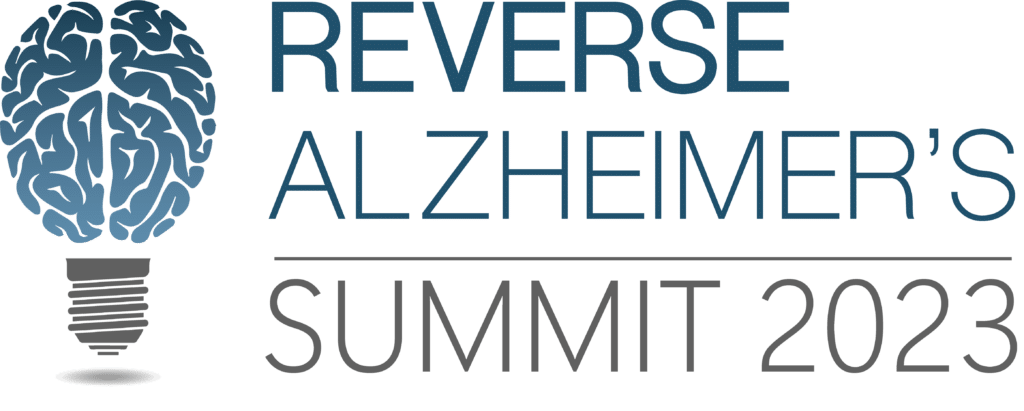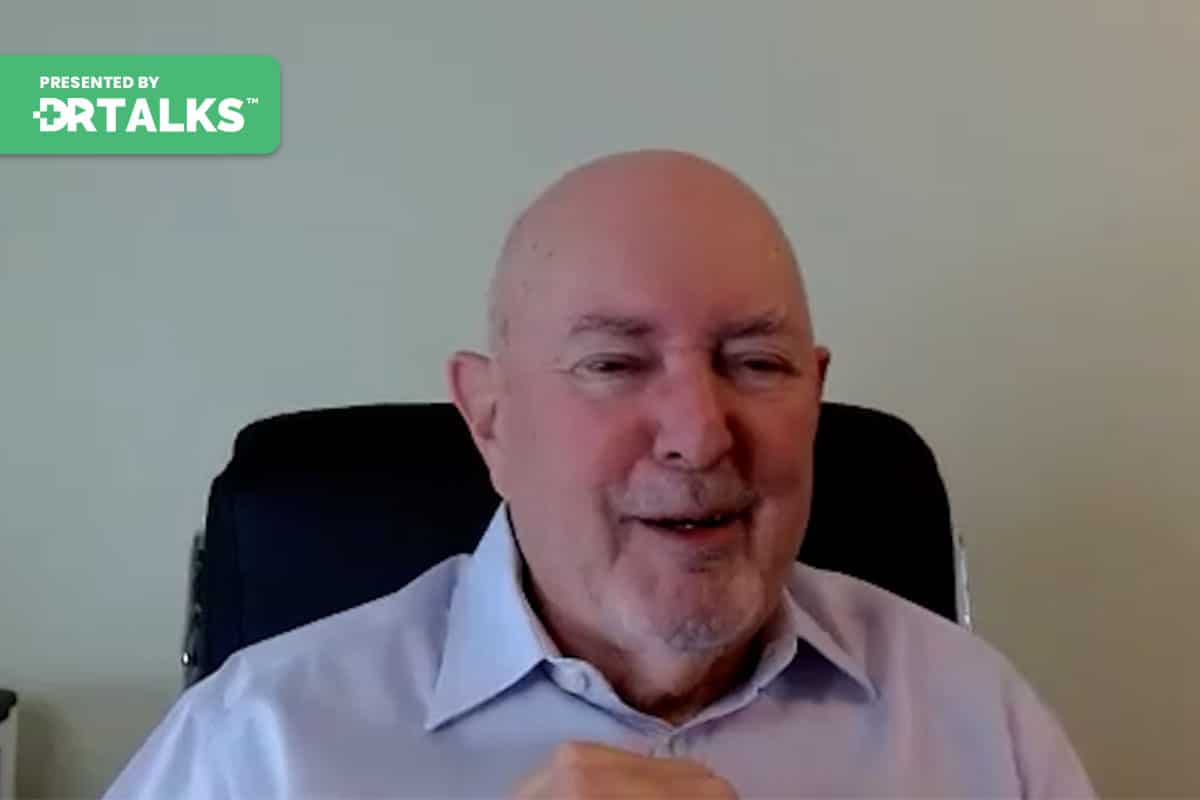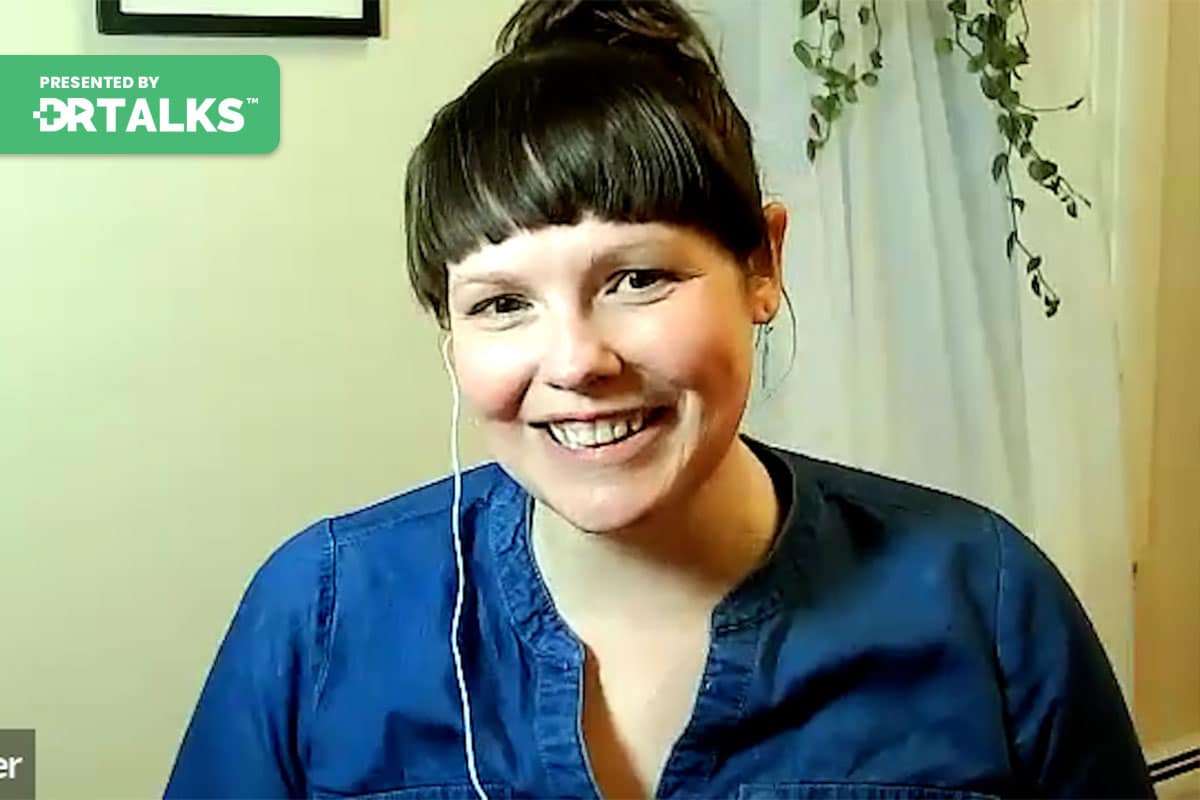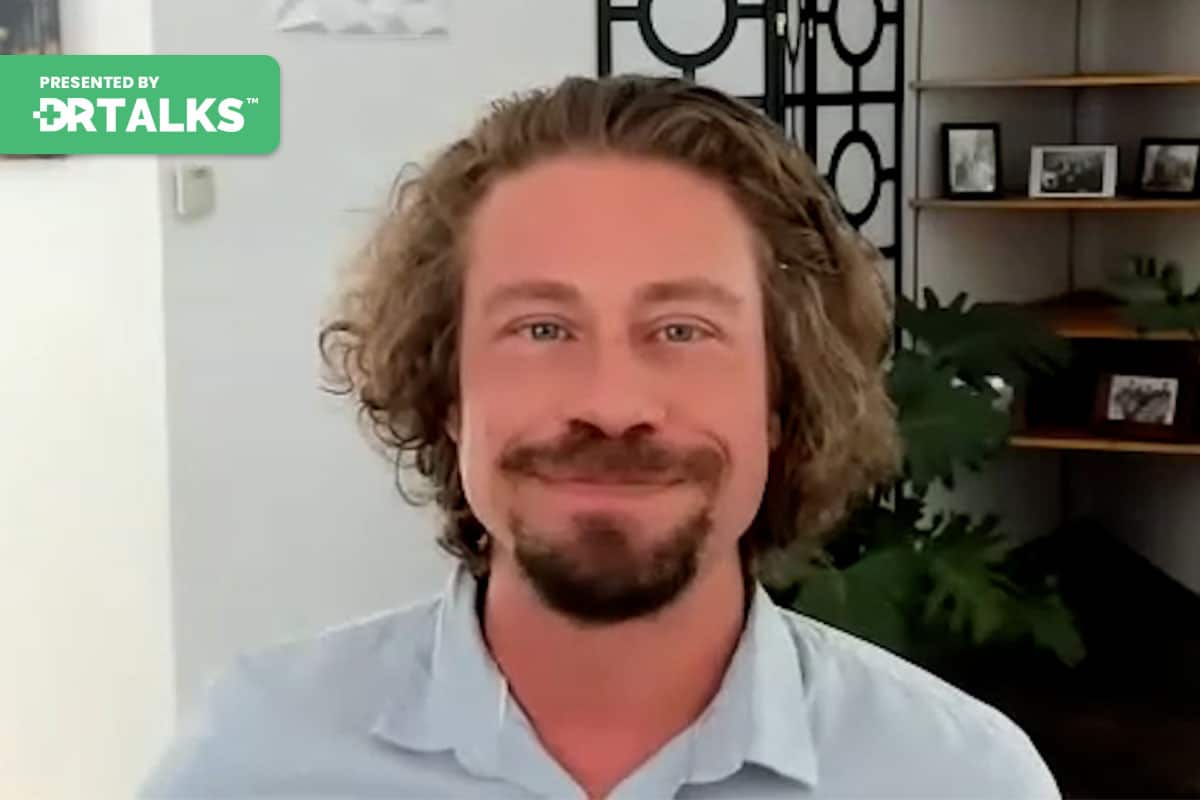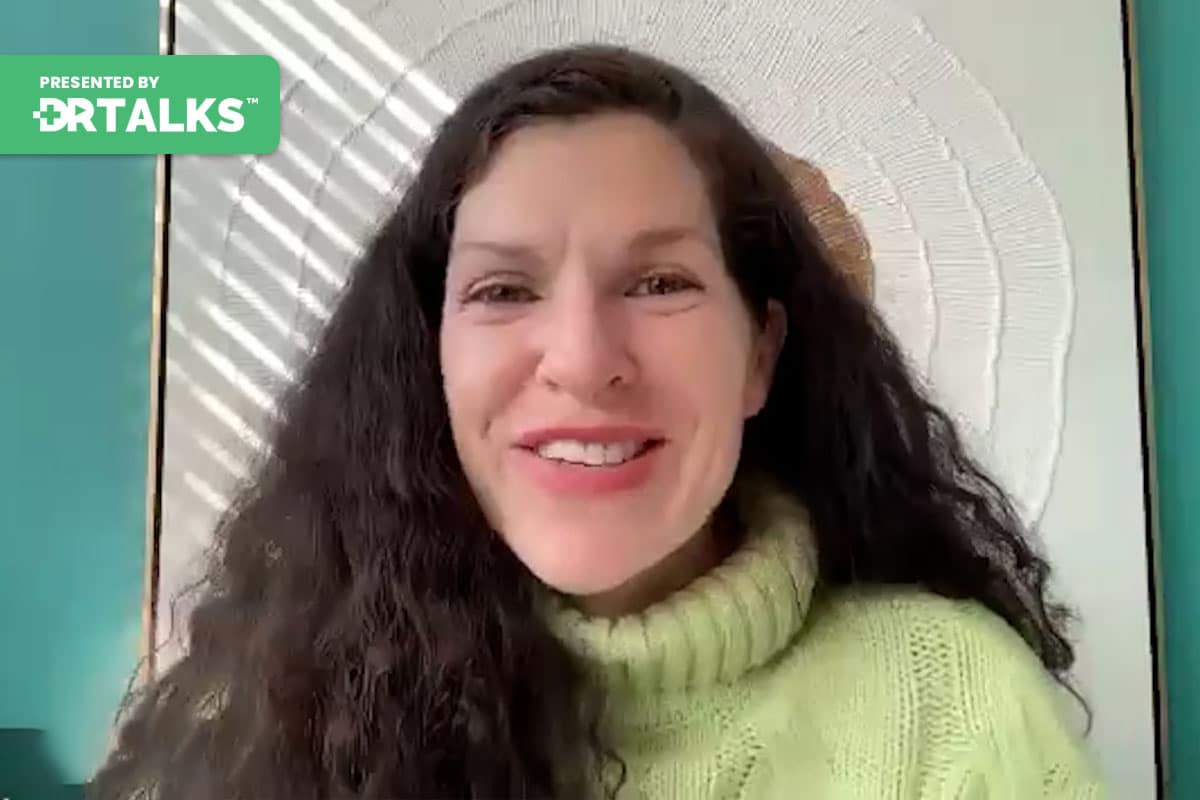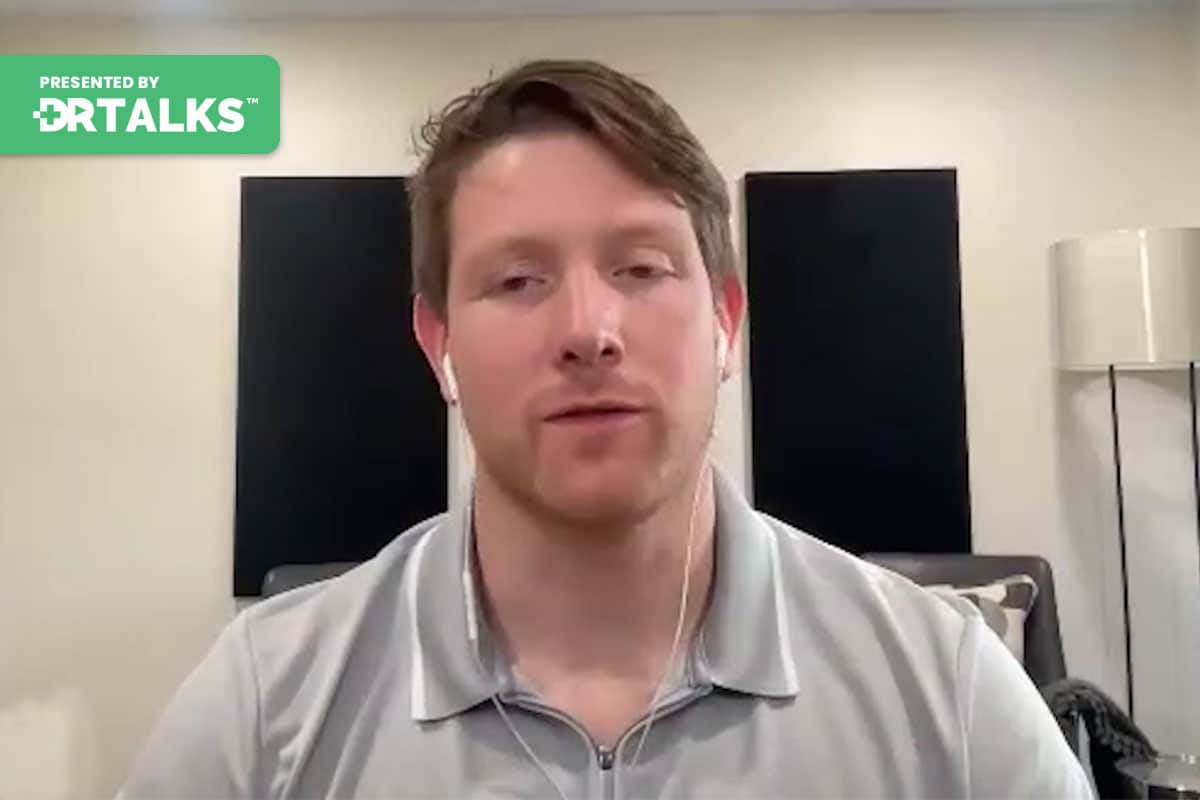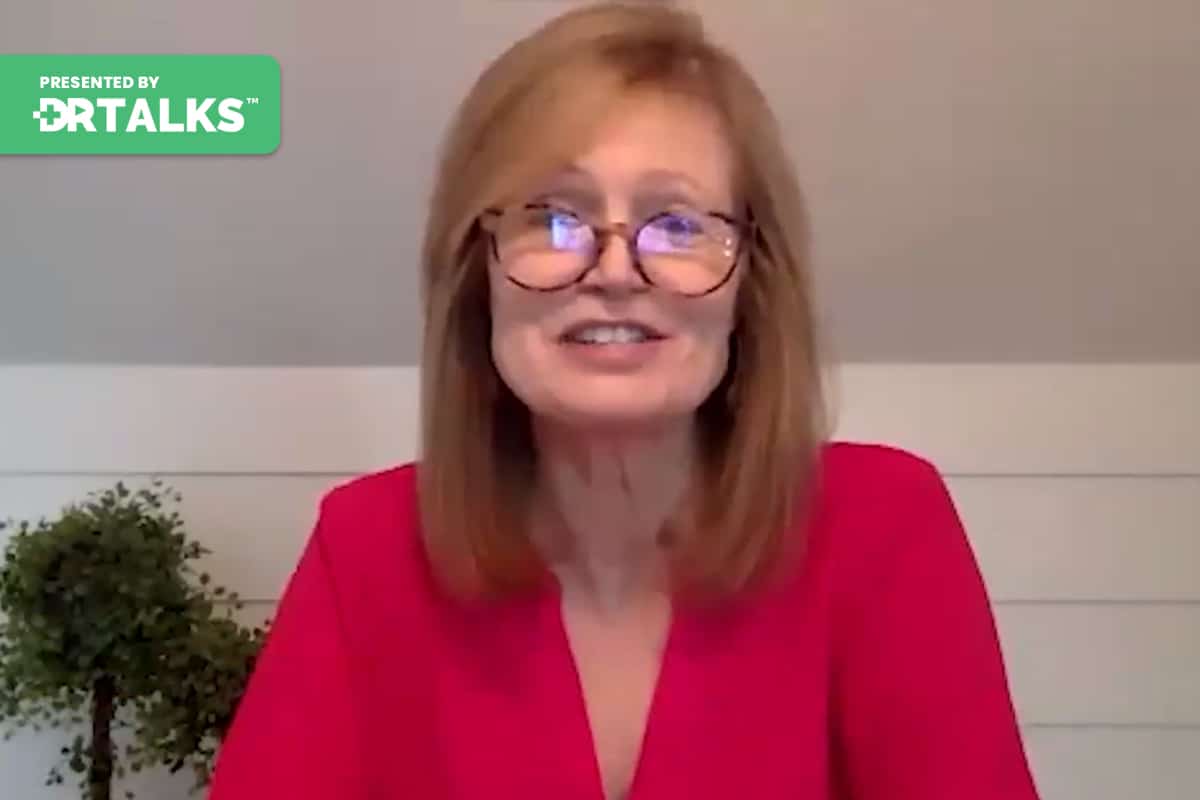Join the discussion below

Dr. Heather Sandison is the founder of Solcere Health Clinic and Marama, the first residential care facility for the elderly of its kind. At Solcere, Dr. Sandison and her team of doctors and health coaches focus primarily on supporting patients looking to optimize cognitive function, prevent mental decline, and reverse... Read More
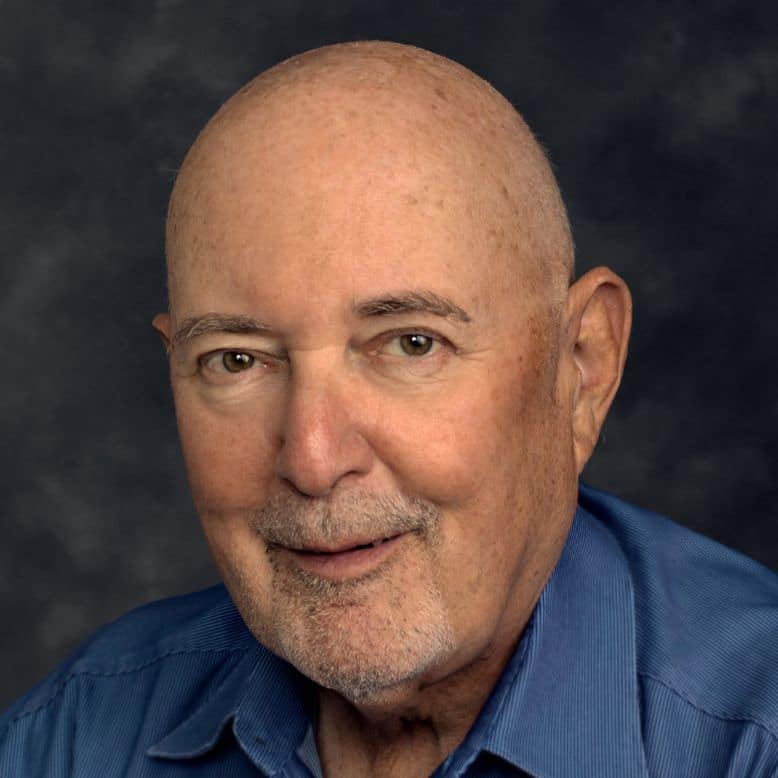
Michael has been an instructor of CranioSacral Therapy for the Upledger Institute for over 22 years, and been involved in mind body work over three decades. He has taught this technique extensively in the US and internationally over this period of time. He has pioneered and coordinated research in the... Read More
Michael Morgan explains the continuum of Alzheimer’s care and how to avoid unpleasant outcomes with early prevention techniques
- Learn about CranioSacral Therapy and how it is a vital component in treating the progression of Alzheimer’s disease
- Discover research that describes how clearing toxins with manual therapy could help prevent and reverse Alzheimer’s disease
Heather Sandison, ND
Welcome to this episode of the Reverse Alzheimer’s Summit. I am so delighted to introduce you to Michael Morgan today. You’re going to see why he is really an incredible human being who’s doing lots of intriguing work in the Alzheimer’s community. And he’s also passionate about the same things I am, including cranial sacral therapy and meditation. I can’t wait for you to get to know what he’s doing in this space. Michael, welcome.
Michael Morgan
Well, thank you. It’s a pleasure to be here. Thank you.
Heather Sandison, ND
So let’s dove right in. How did you learn about what was possible for Alzheimer’s disease?
Michael Morgan
Well, like a lot of people, it’s always a personal thing, like who would ever be interested? And my sister in law and stepmother both died of Alzheimer’s. And after having taught cranial sacral for a while for the Pleasure Institute, I thought we know the craniosacral is effective for closing injuries, even as we found for concussions, even for babies, you know, and developmental problems. And I thought, well, maybe there’s an applicability in Alzheimer’s dementia. So that’s how I started my research. I guess kind of like Dale reticent if, you know, he is the last ten or 15 years. So that’s what got me on this track. And, you know, and I just started to look at, hey, how does this map on to what’s the neurophysiology of this ray?
Heather Sandison, ND
Because cranial sacral for people who are listening who maybe aren’t familiar with that term, essentially what we’re doing is assuming that the bones in the skull have an ability to move. And then as we move them, the physiology and function of the brain underneath the skull is able to be transformed in a positive way. So is that how you would describe it or would you.
Michael Morgan
Yeah, let me let me perfect. We’re on the same. Let me build on that. So and there’s new research talking about how these sutures in the head and the bones, fuze or dot fuze. And we’re always looking for updated scientific research, of which there’s a lot it’s coming thick and fast right now in the last five years. But so think of the head is like a helmet, if you will. And then underneath it is the periosteum of the head and the brain. And then there’s this thin little thing called the meningeal system. It’s only about a millimeters thick. It’s like as thick as a piece of paper. But that’s where the cerebral spinal fluid flows. Now, the most exciting thing with all this research from University of Rochester in University, from Copenhagen with NexGard and other people they have discovered because they developed the technology to look at it long after Doctor of Pleasure passed away into this initial research in the seventies, they saw that there’s this thing called the lymphatic system.
Glint means glue and lymphatic means lymphatic. But they found out there’s this incredibly complex network in the brain, 100 billion neurons, which we’ve known about for a while, but 100 billion astrocytes or glial cells. And that takes to oversimplify that cerebral spinal fluid that flows around the periphery, the head, and trickles into every nook and cranny of the brain. So it’s much more pervasive. We had a hunch it was effective, but this giant science, even some science is is from two months ago coming out, they’ve actually named a new layer right in between the subarachnoid space that seems to have a lot to do with immune system function and not to be too highly technical, but what it means is that we can treat people to palpate or just listen to this thing called the cranial cycle rhythm in the head and in the body. And that helps clears toxins from the brain. It’s that simple. It’s profound, but it’s that simple.
Heather Sandison, ND
So people are.
Michael Morgan
Building on that network physiologically inside the brain.
Heather Sandison, ND
So doctors and other providers, even massage therapists, can be trained to use their hands to touch the heads, the skull of people who are. I know you mentioned babies. You know, this is definitely used in babies. You know, after they go through the birth canal or something’s going on structurally after they’re born, we we often use cranial psychotherapy, but you’re seeing there’s applications even later in life in in the US, we know that the babies have malleable or movable bone structure and this is so that they can get through the the birth canal and then so that their brain can physically grow and their head can grow with it. And a lot of the assumption for a very long time was that adult skulls were huge. And in fact, I think the textbooks in the US say that they were fuzed. But when I was going through training at least, but in Europe, they actually said that the bones were more malleable, that there were those sutures, there’s connections between the bones did in fact move. So there was some difference independent a across the pond, if you will. And now you’re saying that everyone sort of shifted to the assumption or the knowledge that there is this ability for movement and that that movement can be facilitated through hands on work.
Michael Morgan
Exactly. And it’s a little bit of a continuum. And Heather, I talk about this a lot, like how I learned to work on older peoples working on babies and kids because babies and children and older people are the two most vulnerable parts of the population and aging, you know, it’s kind of a joke, but, you know, as you get older, you can get trickier. You don’t get as much fluid flow, you don’t get as much flexibility. And to put it really simply, the more flexible you are when you get older, then the more viable you can be. And typically what we found in our research is that people that have Alzheimer’s, there is this flow of cerebrospinal fluid is maybe 75% less than the normal adult. So it’s like the brain dries up, what we say an irate. It’s like a water deficiency, it’s like a board of initiation. It’s like the brain does gets dry and instead of being able to put some moisture on your moisturizer on your head, which I always have to do anyway, you can’t quite have that seep into the brain. So you have to use the manual therapy with a very light touch to do it. That’s what we’re training people.
Heather Sandison, ND
Wow. So have you noticed changes in people with suffering with Alzheimer’s after manual therapy like this?
Michael Morgan
Yes. And that’s part of my whole campaign I wanted to talk about, because you talk about reversing Alzheimer’s. And I wanted to talk a little bit about the continuum of why it takes a little time to do this. But yeah, we did an initial study that I was a consultant for in the American Journal of Geological Nursing in 2008 and we took people that had early to mid stage dementia and did this thing called a craniosacral still point for every time the same day for ten or 15 minutes. That’s why my books called Prevent Alzheimer’s in 10 minutes a day. It sounds a little simplistic, but it’s basically that still point helps move and boost the flow of cerebrospinal fluid and we’re always doing more research to validate these findings. But what we found is that they started to get more conscious.
They started to remember things not in all cases, but in a certain percentage of cases. We found a kind of an interesting impulse, like reticence. You know, we did this record study, and he was really honest to say that while about 50% of the time we can see change, about 25% of the time some and about 25%. Not at all. But I’m thinking even if that 50% we could build on resemble what Bredesen is doing and help with the metabolic piece in our craniosacral, then you’re stacking the cards maximally in someone’s favor. That’s what you want to do. You want to use every modality you can, and that’s where you get in a continuum for the prevention phase to working with people that are even to early to mid-stage, if that makes sense.
Heather Sandison, ND
Absolutely. That makes sense. I love what you’re describing with this fluid, right? This fluid is in the brain, bathing the brain. And what Dr. Patterson’s approach, as you know, very steeped in that. That’s exactly what we do at the clinic and then at Miramar and adding this ability to move fluid through the brain that’s meant to be there. You’re going to be delivering the nutrients that are necessary to make the energy so that the neurons function. And you’re also going to be able to take the trash out, right? You’re going to be able to get those toxins out of the brain and be delivered into the more general, the outside, the cranial outside, the the cranial sacral fluid or outside the central nervous system so that you can take that trash, get it out of the brain so it’s not, it’s not continuing to bathe all those neurons in the toxic stuff.
Michael Morgan
Yeah. And that’s part of where we’re wide. Right. We’re going right to the core of it right now. So this is great. The idea is that why manual therapy like cranial cycle is complementary to changes in diet as we can already see, you know, someone that can change their diet and give profound effects depending on the person can see fairly recent, you know, results within a few weeks where the metabolism changes, they see a difference. But what I say when I say, well, why is cranial psychotherapy the missing piece is that you can do metabolic change. You can do change in dietary. That’s going to change the endocrine system, that’s going to change hormonal expression and so on and so forth. But you need to do something to get deep inside the neurological structure to allow those toxins to release more easily. And if I may, I’ll just share with you my idea of the continuum. This is what got me really excited about speaking with you about this. Like if you think about the continuum of Alzheimer’s, right? I’m probably asking my own questions, but your audience could do this.
They could take a piece of blank paper. All right. And make like two goal post. Right. And then draw a line. All right. And then they could label over on the left, begin and they could over end and label on the right end. This is very simplistic. This is not a fancy PowerPoint. But then what you do in that line, you can make 20 marks and each mark would represent a year. Okay, obviously not to scale, but like that. Now what I used to think is that the arc of Alzheimer’s from beginning to end was about 8 to 12 years where someone had early identification and they would start to exhibit symptoms. And then, unfortunately, like COVID, maybe 5% of people die with Alzheimer’s is more like 100%, but it’s a slower moving target. Like with Colbert, you use an analogy, you’re seeing an impact over weeks from beginning to end. Sometimes, not always. Thank God, resulting in death. But in some cases, yes, with Alzheimer’s it’s a slower burn so people don’t notice the progression as easily.
You have to have a longer view. And so what doctor reticent notice and I noticed too in my clinical observations is that, oh, it’s not just 8 to 12 years, but it’s more like a continuum to generalize of about 20 years. And I kind of joke, it’s not like people wake up one day with Alzheimer’s, like they get the flu or diabetes. It’s like it’s been brewing for maybe 20 years. So if you take this little chart, for example. All right, and then around year 18, you put late stage in, maybe around you’re 16, you put mid-stage. And I know I’m just generalizing. And then around the stay, they say 14 you put early. That’s the way people have been thinking about it for some time. Mm hmm. What reticence added to it and I started to observe this to you, made a couple of earlier markers, subjective cognitive decline and then asymptomatic, which probably means all of us have it. But anyway, that takes us back to about year ten. Now, you can look at this chart and say, what’s going on? The ten years before that, what’s been brewing and the idea in this idea of reversing Alzheimer’s. And you made me think about this when you start when you invited me to speak, is that if you were to intervene where we couldn’t even identify it yet, but maybe we could feel it with our hands, like with cranial sacral. Then maybe what would happen is if we could change the trajectory. So instead of the endpoint being death, we could change the outcome up here. So if you can stay with me on this, the idea is that the best thing to do, obviously, is to prevent because it’s a lot less work honestly, it’s a lot less money and it’s just easier to do. But sometimes prevention is hard to sell because it’s like, I’m feeling okay, but they could have a lot of the markers, you know, you can look at a lot of the titers and markers and say, what’s going on with your, you know, your blood levels and cholesterol and all these different factors, some of which, like my functional medicine doctor looks at these, they look at titers that most people don’t look at.
So they can and I know I’m speaking of the choir, but they’re looking at the precursors. But then in terms of when you look at the continuum, when you’re talking to people and say, I’m in early stage Alzheimer’s or I’m in mid-stage, it’s kind of like I want to try to catch people before they get to the neurological tipping point. And so as the disease progresses, the first thing the claim on making and research is saying, well, maybe we could slow the progression. And it’s interesting, even the American Alzheimer’s Association is starting to say that there’s pretty conserved time because a lot of people in the space doing alternative work, myself, Dr. Bredesen and others are saying, you know what, we think we could at least slow the progression.
That’s the first thing. And we at least have enough background evidence and anecdotal evidence to say, Yeah, I can see that. And like the study I referred to, we could definitely slow the progression and follow up studies we’ve done. The next stage would be like when you’re back in your car, out side of the driveway, we want to stop the progression. So there’s a sequence to this. We want to, first of all, identifying keep it from happening, then we want to slow the progression there, then we want to stop it, right? And then the trick is when you say a reversing, what does it take to actually not only stabilize and stop, but bring it back the other way? That’s a tall order. Honestly. And what I found with our intensive cranial cycle programs are we have many people work on someone at the same time.
That’s kind of my thing is that, yeah, we can give people techniques to help them, kind of like slow the progression and try to keep things stabilized. But if they’ve already in these ten years before the symptoms show up, already things are in are have been brewing like a lot of inflammatory processes in the body which unfortunately then can overflow into the brain in some cases. Then you need to go a little deeper to get into not only what you’re doing to change the symptoms that are current and acute, but you need to do a little deeper work to clear out what’s been there from the past. And that’s my whole campaign about longevity. It’s like you need to do something, even though you know you’re worried about your risk. You need to do something to clear out some of the karma, if you will, or some of the accumulation from the past. So for me, that’s my take about reversing. It’s like, first you’ve got to slow, then you’ve got to stop. And like when you back the car out of the driveway, you got to stop a little bit before you put it in forward. Yeah, right. You got to do those steps. So that’s my sense over time of the progression and what needs to be done. So anyway, that’s a long answer to a short question.
Heather Sandison, ND
There’s another big component, Ukrainian sacral work, and that’s balancing that sympathetic nervous system. Yeah. So we have the fight flight freeze state, which is our sympathetic, dominant kind of state where many of us spend most of our time and stress, anxiety, depression, which are associated with that state, are highly correlated to risk for Alzheimer’s disease. Yes, those the rest digest and heal state is stimulated through that manual therapy. So can you tell us a little bit more of that about that?
Michael Morgan
Yeah. And this whole thing, just as an aside and Bredesen made this point to Alzheimer’s are not just a one pill solution, right? That’s why it’s been so hard to come up with a drug for it, honestly. You know, there’s different things. There’s a vascular component, there’s an inflammatory component. There is a toxic or hormonal. There’s also something that can be heavy metals. And then there can be external blow to the body. Just as a preface to that. Yeah. So a lot of these underlying is the fact that when you have a trauma in the body, whether it’s exhaustion is or endogenous, whether it’s an external insult to the body or something internal, what the body will do in response is this reticular activating system in the back that they had that we work with a lot with cranial sacral, it gets activated. So the body’s on alert all the time. And that correlates, as we know, from meditation to higher stress levels.
And a lot of these diseases, you know, every culture has their typical diseases, right? And cancer and heart disease and Alzheimer’s is even a little bit as is related underneath to a pathway of stress. So if you have a high sympathetic tone all the time, the body’s on high alert and it’s in it’s kind of like depleting the resources of the immune system. The immune system doesn’t simply have the resource to effectively as respond to stressors. That’s why some people with COVID, for example, they don’t recover. Some people with long COVID, they just don’t have the resources. And they’re stressed, understandably. And then if they had other risk factors like overweight or other inflammatory and maybe there’s some genetic markers that could be a piece of the puzzle that increases the risk, all that can result in stress.
So what we found with cranial is that in general, we can lower the stress level and have a more parasympathetic tone than people their nervous system is able to handle. And I think honestly, when I think about it, in our initial research of cranial psychotherapy in the still point, one of the things we found is an early marker is a decrease in agitation levels that there’s something called the Cone Mansfield Agitation Study. We had as one of our armamentarium of different research, things that we applied to, to people in nursing homes and people with Alzheimer’s can get very agitated. I mean, it’s very frustrating if you can’t remember anything that would make sense. And they get agitated. You know, you’ve heard of Sundowner Syndrome that. But what the cranial seems to do is that it lowered that sympathetic tones. They were calmer. And it kind of makes sense. If you’re calmer, it’s probably easier to remember things. It’s easier to think so. Yeah, that’s a big component is the whole. And now, you know, we talk about post-traumatic stress and God only knows in this culture who hasn’t had some connection with the post-traumatic incident. Right. It’s just endemic in our culture. So, yeah, it makes a big difference if you can lower sympathetic tone that ripples through all these other bodies systems, the nervous system, the endocrine system, you know, hormonal system, immune system, all these systems can and I.
Heather Sandison, ND
Want to talk to all of the caregivers listening right now. Okay, good. And give them permission and basically plead with them to find a great cranial sacral therapist for managing your stress levels. We know that caregivers are anywhere from 2.5 to 6 times more likely to be diagnosed. That with Alzheimer’s later in their life compared to those who are not caregivers. Right. So this is hugely increased risk for being diagnosed with dementia. And a big part of that is the amount of stress it takes to care for someone. So please, you know, if you’re inspired to find a cranial sacral therapist for the person you’re caring for, make sure you get on the schedule as well so that you can get the benefit of this. Michael, I want you to explain.
Michael Morgan
And just just a little aside on that. I am like a monthly caregiver. Recall that where we counsel.
Heather Sandison, ND
People in. Because we’re dealing with not only their parents or loved one, maybe their kids, but then they’re in the middle. So I’m just tell me about that. How can people find out more about that?
Michael Morgan
Just go to preventing Alzheimer’s dot com and then you can sign up for there’s a little list of meetings we have every month. So we have a Zoom meeting every month for an hour. But we support caregivers because just like you’re saying, a lot of people and a lot of caregivers turned out to be women. They’re the caretakers. They’re the ones that are more risk for Alzheimer’s anyway. So there’s all those things working against you and you want to take care of yourself as well as your loved ones. And that’s just that’s what I found from doing my first summits is that, yeah, caregivers, there’s a need there for us to take care of them as well. So we’ve started to specialize in that also. So yeah, what.
Heather Sandison, ND
A phenomenal resource for people. Thank you for making that available. Now describe the still point. What is that?
Michael Morgan
It’s a technique that 80 still and the name is coincidental. Well, who was one of the fathers of cranial osteopathy and osteopathic medicine came up with an idea that you can listen to the cranial rhythm and actually follow it into an area where it starts to slow down and come to a very, very slow halt. And when it comes into this area of quiescence or quietness or something, we can hardly even notice a rhythm. That’s when things like kind of reset in the body. It’s like resetting your computer. Or if you’re know about furnaces, you know, sometimes you have to go in the basement and set the red reset button to get it reset. It’s a way of resetting the system. And normally every day the system may do it for a few seconds all the time. But this is a structured technique that we even teach virtually now.
This is how we want to get this out worldwide to train caregivers so they can do this simple technique and even that can have a positive effect. Like I had one lady on the West Coast recently and she said, you know, I started to do this still point I didn’t know about. It was a little thing called the steel point use or you can order from my pleasure institute. And she said my doctors by now I thought my doc, my husband would be in the mid-stage, but now he’s still in early stage. So that’s a plus because at least he’s trying to hold the line even with that more intensive work. So yeah, it’s just that simple. It’s like training someone to listen to this thing called the cranial rhythm, which is just takes a little time to practice, just like a nurse might be trained to listen to the heartbeat or the respiratory rhythm. This is a little more subtle, but with a little intended listening and coaching, people can start to tune into it.
Heather Sandison, ND
Even laypeople and I shared with you right before we started recording that Craniosacral is something that has been hugely beneficial for me in my health. And when I was in undergrad training and thinking that I was going to go into medical school, conventional medical school, I actually switched gears and went into naturopathic medicine after meeting an osteopath who practiced cranial sacral therapy. And she really encouraged me to go in the naturopathic direction. Yeah, and the reason I was so inspired by her is because of my own personal experience getting so much benefit from this manual therapy. Now, I’ve also had the benefit of the skill point, which induces this very serene, very calm state and as a caregiver, as someone suffering with dementia, this is, of course, like who wouldn’t want this? Who wouldn’t want that sense of harm?
Michael Morgan
Yeah. And, you know, what we’re really doing is tapping into the intelligence of nature. You know, the very are very kind of principle like we’re listening to oscillations in the nervous system, different rhythms, different vibrations, getting down to almost like a baseline. And when we do that, all the other rhythms above it that influence the nervous system or the immune system, the endocrine system like that, all of that starts to realign and shift. So we’re listening to something at a pretty core level of the body. And like you say, people feel that when you teach people all classes, like there’s a sense of silence, profound sense of just like wholeness, that you can’t even put a word on it. It’s very profound, but physiologically it has lots of effects to.
Heather Sandison, ND
Wow. So you kind of describe this as the missing piece of the treatment of Alzheimer’s. Why don’t more people not know about this as an option?
Michael Morgan
I think it’s getting out the word and part of it is, you know, I’ve been a speaker of the American Society of Aging now for five years. And it’s just some of it is form oriented and nothing wrong but medical community has their own algorithm. They have their own way of thinking about what works, which is typically, as you well know, medicine or rather surgery or drugs. That’s a big. So I always speak a lot about non-pharmaceutical alternatives and people just haven’t known that something is available that simple and easy to learn. Now, in all fairness, you know, we want to talk about being evidence based. So we’re always trying to do more research, you know, but that takes money. A lot of mine has been self-funded, but it’s like, let’s look and see.
Reticence done the same thing with his work looking at metabolic pieces, but it’s like knowing there’s a more modality. We’re not saying cranial sacral standalone like do this and nothing else, but it’s so complementary to chiropractic or naturopathy or any number of, you know, physical therapy, occupational therapy. And what’s great about it is that not only do we address the simple things like the still points, but I’ve been training now for some years people that are like certified longevity specialists. So they can look not only at the basis of cranial sacral, at the basis, but look at the mental, emotional and even spiritual component as well. Because as you know, I mean, sometimes in aging and Alzheimer’s, like people don’t want to remember things. They might be a real darn good reason why they don’t remember. So it takes a certain amount of skill and delicacy and committed to listening and respect to hold the space for people. But even the very simple thing would work. But if people want to go further like they’re in a nursing home and they want to apply and see if we can reverse something and bring it back, that’s what we’re training people to do as well. How it’s.
Heather Sandison, ND
Hadean.
Michael Morgan
Yeah, yeah.
Heather Sandison, ND
So you have a five year mission to prevent deaths from Alzheimer’s worldwide. And this is a lofty goal. Tell me tell me your plan.
Michael Morgan
Well, this this was crazy, but it was based on research. So that continuum, that little chart that we made and when I say significantly reduced the deaths, I mean 20%. So when you look at the stats for Alzheimer’s, it’s about 5.2 million people that are officially diagnosed with Alzheimer’s as much as it can be diagnosed in the US, in the U.S. and by 2050 that’s going to double. And that pretty much tracks with the numbers around the world as well. So I thought if we could catch people on that continuum before things worsen or change the trajectory, I call it change the trajectory of the Alzheimer’s. If we could train enough people, even in the simple part of the take, make a two day training and integrate that with other things.
Then maybe instead of about half a million people dying of Alzheimer’s a year, part of the stats is and one of the hospitals in Chicago did a study on this, basically officially 83,000 people a year die of Alzheimer’s, but the subsequent effects of it is what they really die of. Ultimately, a respiratory or cardiac distress, but it’s all related. So when you take that into view, Alzheimer’s would be the third most frequent cause of death in the United States, not the first, although COVID is kind of not that, but sounds COVID, it would be about the third major type of disease in terms of the mortality. So given that it’s really about a half a million people, so that’s a pretty big number. And I thought even if we could affect 20% or 100,000 people a year, we could save 100,000 lives a year. And worldwide, that’s magnified by the 44 million people that have Alzheimer’s dementia currently, which will also triple in the next 30 years. It’s all about training and it’s all about deliverables.
Heather Sandison, ND
So how do people and people can train remotely, right? Yeah. Okay.
Michael Morgan
So ideal in person, but they can train virtually as well. Yeah.
Heather Sandison, ND
And how does that work? How do they find out more about getting that training?
Michael Morgan
Well, again, preventing Alzheimer’s dot com. That’s my website. They can look and say here I can do a virtual training or I can do one in person. And I’ve done a lot. And this is all because of COVID. You know, before we never thought a manual therapy could technique and and, you know, virtually it’s not officially cranial sacral, but people can work on themselves in their own home how partners at home were treating them. Right. So we’re just having the information is a virtual platform and delivery system so they can do that, learn some very simple techniques like that and then build upon that like that and start to intervene, start with little things and even get a little bit of a step. We want to slow the progression first, then stop it and then add other pieces of modalities and see if we can bring it all the way back. That is the reversing part that makes sense.
Heather Sandison, ND
Yeah, of course. Now, you also hosted a summit, is that right?
Michael Morgan
Yeah, I did an Alzheimer’s World Summit two years ago. I did a longevity world summit this last year. And I’m doing another Alzheimer’s two World Summit this October. So we have speakers like yourself that come and there are experts from all these different disciplines and points of view. We’ve had Marcy chime on up who’s a, you know, transformational, spiritual speaker who’s an old friend of mine. She was the speaker and one of my songs. We had some really interesting people. We’ve looked at artificial intelligence like it or not, and see how that might impact the future of medicine.
We talk about the hallmarks of aging, which is going to transform longevity in the next 20 years. So yeah, we’ve had these ongoing summits and it’s been great to get a lot of different viewpoints, including supporting the caregivers. Yeah, you know, like one of the most frequently asked questions is how do I talk to my husband about this? He doesn’t want to listen, but you don’t have to have Alzheimer’s for that. But it’s like, Yeah, how do you talk about that in a way that there can be a listening to say, you know, maybe something different. And I’m sure you’ve noticed this too, you know, maybe something different might be of value.
Heather Sandison, ND
Right?
Michael Morgan
Yeah, I heard about so that we’re trying to bring that out as a resource for people as well, just like you’re doing.
Heather Sandison, ND
Fantastic. Well, thank you so much for joining us and sharing. That’s really unique and really important information. And there’s a incredible resource for our listeners because I know there are going to be a lot of lives change just from hearing this information. So, Michael, thank you so, so much for joining us.
Michael Morgan
You’re welcome.
Downloads
